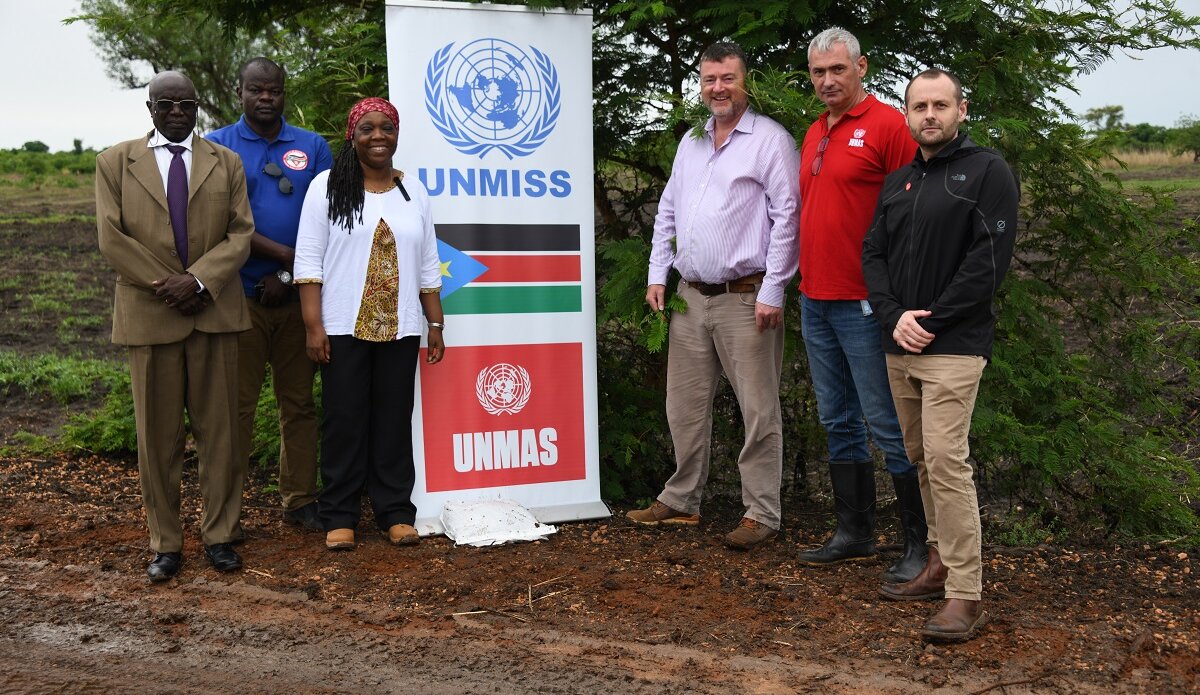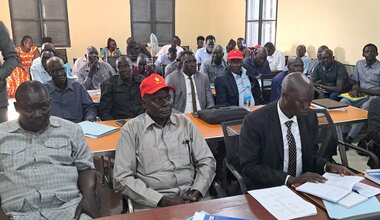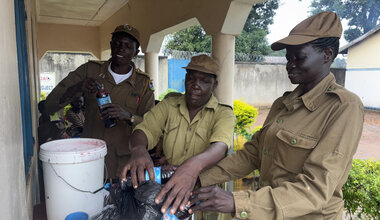UNMISS Deputy Chief visits Gondokoro to assess progress in mine clearance
CENTRAL EQUATORIA – It was a rainy day in South Sudan, but the weather didn’t prevent the Secretary-General’s Deputy Special Representative for South Sudan, Sara Beysolow Nyanti, who is also the Humanitarian and Resident Coordinator in the world’s newest nation from travelling to Gondokoro, some 25 kilometers east of the country’s capital, Juba.
DSRSG Nyanti’s focus: Evaluating the progress made by the United Nations Mine Action Service (UNMAS) in its ongoing clearance activities here.
Gondokoro was previously a conflict area and subsequently, had been used as a cattle camp for grazing animals; however, following a series of mine accidents since 2016 and, more recently, in March last year, local communities started avoiding the area and abandoned the nearby feeder road.
In response to such life and livelihood threatening occurrences, UNMAS has undertaken surveys and their demining teams have conducted numerous clearance activities, while also raising awareness among residents living here of the risks associated with mines and unexploded ordnance.
“As South Sudan transitions from war to peace, mines and unexploded ordnance continue to be a tangible reminder of the country’s violent past and continue to affect communities today,” revealed Fran O’ Grady, Chief of Mine Action in South Sudan.
“But I am immensely proud of the hard work done by all UNMAS and national deminers to make Gondokoro a safer place for communities to lead their lives,” he continued. “It’s not been an easy undertaking. So far, our teams have found and safely cleared more than 50 mines, freeing up an area totaling 147,820 square meters. That is comparable to around 15 football fields.
Additionally, as the clearance progressed previously unrecorded mine lines have been discovered leading to the possibility that the team will continue conducting the clearance at this site for a considerable length of time.
“The discovery of new threats is what has brought me back to Gondokoro today,” said DSRSG Nyanti. “I was here in February and at the time we were looking at 16 mines that needed to be destroyed and now, in May, the team has found over 50 and are continuing to find more such threats to life. For me this is indicative of the situation we have in South Sudan when it comes to mine action. There’s a lot of work to be done and a lot of work that’s being done. It’s extremely dangerous and laborious and these deminers are heroes.”
The DSRSG also took charge of the remote firing device and helped destroy a mine that remained dormant, a silent killer for at least 32 years. “Imagine how many such risks are still under the earth that needs to come out to protect children; to make sure they have a viable future and attain their full potential; to make sure that families can return, farm their lands and look forward to leading prosperous, safe lives.”
For his part, Jurkuch Barak Jurkuch, Chairperson, National Mine Action Authority, believes that to make South Sudan a mine-free zone, partnerships are key. “The progress we have made so far in clearing lands would not have been possible without our ongoing collaboration with UNMAS. This is a relationship we will continue to nurture,” he averred.
Mr. O’Grady agrees. “Saving lives and building a brighter future for South Sudan is a shared goal and can only be achieved through partnerships and commitment.”
 UN
UN United Nations Peacekeeping
United Nations Peacekeeping





